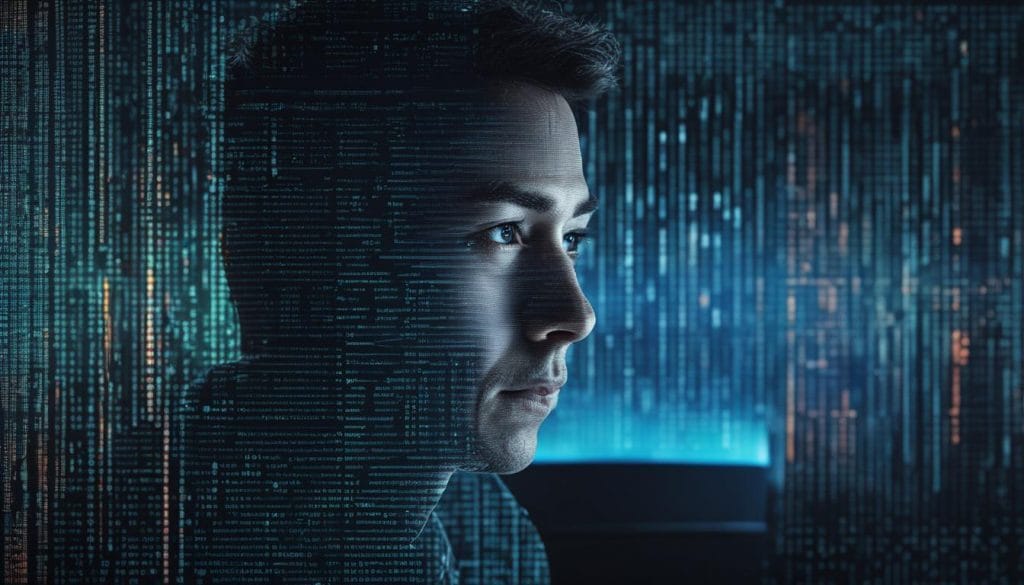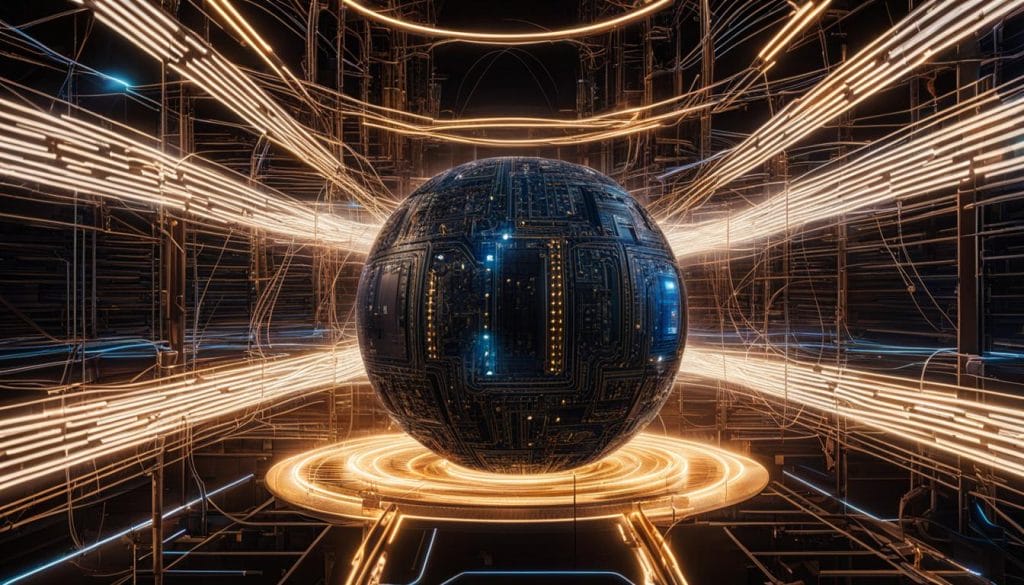With the rapid advancement of AI-generated content and the growing popularity of tools like ChatGPT, ensuring content authenticity has become more critical than ever. As you may know, generative AI detectors are designed to detect and flag AI-generated content, keeping it separate from genuine, human-authored material. In this article, we’ll explore whether ChatGPT detectors really work and evaluate their effectiveness at catching AI-generated text.
With recent studies raising concerns about the capability of AI content detection tools, it’s essential to understand the current state of the industry and the implications these developments have on academic integrity and other professional industries reliant on original content. ChatGPT detector tools, their inner workings, and the ongoing rivalry between AI writing tools and their respective generative AI detectors.
The Challenge of Detecting AI-Generated Content

Generative AI tools such as ChatGPT have made strides in producing human-like content, thus making it difficult for detectors to discern whether the content was created by a human or AI. This section explores the challenges faced by AI detection tools in identifying AI-generated writing, specifically when literary language is employed and when writing complexity varies.
Understanding How AI Writing Tools Operate
AI writing tools, including ChatGPT and other generative pre-trained transformer models, operate by predicting the next word in a sequence and creating text that mimics human writing. While these tools are becoming increasingly proficient, it can be difficult for AI detectors to identify content generated by AI, especially when the generated text shows no clear discrepancies and appears original.
Literary Language vs. Simple Prose in ChatGPT Output
When AI-generated content employs simple prose, it is often more readily detected by AI detectors. However, when instructed to use literary language, AI-generated essays evade detection significantly more effectively. In an experiment, there was a stark contrast between a straightforward and a flowery version of a text on plagiarism. The flowery version went undetected by several AI detectors, highlighting the fundamental flaws in current detection systems.
By employing literary language, AI-generated writing becomes more difficult to detect, thus making it a challenge for existing AI detectors to ensure authentic and original content usage.
Testing AI Detectors with Complexity Variations
Tests of seven widely-used ChatGPT detectors revealed that they were outperformed by varied complexity in writing, such as using more elaborate language. Experimentation demonstrated that even the layering of several detectors did little to improve the accuracy of detecting AI-generated essays, leaving considerable room for false negatives and false positives.
Moreover, due to the continuous advancement in language models, detectors must keep up with the complexity variations in AI-generated content, further emphasizing the need for constant development and improvement.
- False negatives: AI-generated content that goes undetected by AI detectors.
- False positives: Human-generated content that is inaccurately identified as AI-generated.
Ultimately, the ongoing challenge of detecting AI-generated content highlights the need for improvement in AI detection tools and systems that can cope with the ever-evolving landscape of generative AI.
How ChatGPT Detectors Assess Authenticity

Determining the authenticity of text created by AI-generated tools has become increasingly complex. A prime factor that AI detectors utilize for gauging authentic content is text perplexity. In this article, we discuss the significance of text perplexity in AI detection and explore the misclassification issues and biases that pose challenges to these tools.
The Role of “Text Perplexity” in AI Detection
Text perplexity plays a crucial role in evaluating the predictability of writing. AI-generated content generally displays low text perplexity, indicating a high level of predictability within the text. In contrast, human-authored content tends to exhibit higher perplexity, signifying a sense of surprise or unexpectedness in the language used.
“Text perplexity is a critical factor used by AI detectors to assess the predictability of writing. However, this mechanism can be manipulated with more sophisticated language choices or fall short when dealing with non-native speakers.”
While text perplexity remains an essential factor in distinguishing between human and AI-generated content, its efficacy diminishes when AI writing tools employ more sophisticated language structures or when non-native English speakers are analyzed. This suggests that while text perplexity can serve as a valuable metric, it has limitations that can compromise the reliability of AI detectors.
Misclassification Issues and Biases in Existing Tools
A significant challenge for AI detection tools lies in their propensity for misclassification. A study conducted by Stanford researchers found that ChatGPT detectors often misclassify authentic human writing as AI-generated content, particularly for non-native English speakers. Conversely, the detectors perform near-perfectly for native English speakers, revealing biases in the detection models.
- Evaluation of performance among native English speakers
- Evaluation of performance among non-native English speakers
- Biases in detection models
As evidence of these issues, instances of TOEFL essays flagged as AI-generated content showcase the current limitations of AI detection tools. This raises concerns about efficacy and fairness in the context of originality verification.
In conclusion, while text perplexity serves as a key metric for AI detection, it has its limitations and is prone to biases. Therefore, it is crucial to address these challenges and rethink strategies for evaluating text in order to ensure accurate assessments in both academic and professional settings.
The Impact on Education and Academic Integrity

As AI tools like ChatGPT become increasingly sophisticated and capable of producing complex writing, the education sector is facing new challenges in ensuring academic integrity and accurately evaluating student work. With the potential for false positives in AI-generated content detection, additional burdens are placed on both students and educators. This situation necessitates a careful analysis of how to meaningfully integrate AI detection tools into educational settings to preserve high standards of integrity.
Instances of misclassifying students’ work as AI-generated, particularly for non-native English speakers, demonstrate the inherent biases and current limitations of AI detection tools. Therefore, it is crucial to consider alternative ways of evaluating students’ work that go beyond AI detection systems. Some possible solutions include:
- Developing a more comprehensive evaluation rubric that considers student work from various perspectives, such as critical thinking, creativity, and use of sources.
- Encouraging peer review and collaborative work, which may minimize the reliance on AI-generated content and foster originality among students.
- Implementing novel detection methods that focus on identifying patterns in student language and writing style rather than solely relying on perplexity metrics.
Furthermore, as educational institutions strive to maintain academic integrity, they must also address the ethical issues surrounding the use of AI in education. This includes:
- Transparency about the use of AI detection tools, ensuring that students, parents, and educators are aware of their presence and limitations.
- Continuous evaluation of AI detectors’ performance to maintain accuracy and prevent students from being unfairly penalized.
- Consideration of potential biases present in AI detection tools and their impact on different student populations.
“Education is not the learning of facts, but the training of the mind to think.” – Albert Einstein
In conclusion, while AI tools like ChatGPT are revolutionizing the way we generate and evaluate content, their integration into the education system must be approached with diligence and responsibility. It is crucial that educators stay apprised of advancements in AI technology and update their evaluation methods accordingly to maintain high standards of academic integrity and ensure fair treatment of all students.
Conclusion: The Future of AI Detection and Originality Verification
As generative AI technologies like ChatGPT become more sophisticated, it is essential for you, as an educator, to revise strategies for evaluating student work. While AI detection tools may offer some assistance, relying solely on them could lead to false positives or biased results. In the future, combining AI detection with other methods, such as analyzing educational software or monitoring document version history, could provide a more comprehensive approach to maintaining academic integrity and deterring AI-powered cheating.
Turnitin’s AI detector and other AI content detection tools must continuously evolve to keep pace with advancements by companies like OpenAI. Nevertheless, the rapid evolution of AI-generated content presents new challenges in determining the originality and authenticity of student work. It is crucial to implement detection tools carefully, balancing their utility with the need to ensure fair treatment and avoid causing undue harm to innocent students.
Ultimately, the path to upholding academic standards lies in fostering a deep understanding of the limitations, biases, and effectiveness of AI detection tools, while always preparing for the next breakthrough in generative AI. By staying vigilant and adapting to the technology’s ongoing evolution, you can make well-informed decisions on how best to promote originality and integrity in education.
FAQ
How do AI writing tools like ChatGPT operate?
AI writing tools generate text by predicting the next word in a sequence, creating content that mimics human writing. As these tools become more advanced, they make it increasingly difficult for detectors to discern whether the content was created by a human or AI, especially when the generated content appears original and error-free.
Why do ChatGPT detectors struggle to identify AI-generated essays when using literary language?
When AI-generated content employs simple prose, it is more readily detected by AI detectors. However, when AI-generated text uses literary or more complex language, it becomes harder for detectors to identify as AI-produced since it closely resembles human writing, revealing fundamental flaws in current detection systems.
What is text perplexity, and how does it impact AI detection?
Text perplexity is a measure of the predictability of writing. Low text perplexity suggests AI-generated content, while high perplexity indicates human writing. However, perplexity can be manipulated using more sophisticated language choices or might fail when dealing with non-native speakers, which reduces the reliability of AI detectors.
How do biases in AI detectors affect non-native English speakers?
Current GPT detectors display biases, misclassifying authentic human-written essays as AI-generated, especially for non-native English speakers. This raises significant concerns about the limitations of AI detection tools, leading to calls for additional research into improving these technologies and addressing biases to ensure fairness in academic integrity assessment.
What strategies can be employed to address the challenges posed by AI-generated content in education?
To evaluate student work more effectively, educational institutions may need to incorporate strategies beyond AI detection, such as examining revision histories in documents. Organizations like Quill.org recommend innovative methods to cope with the increasing sophistication of AI writing, ultimately promoting originality and maintaining academic standards.
How can AI detection tools adapt to the continuous evolution of AI writing technology?
AI detection tools, like Turnitin’s AI detector, must constantly evolve to keep pace with rapidly advancing AI writing technology, including ongoing developments like GPT-4. Ensuring accurate and ethical solutions to the challenges presented by AI-generated content in education requires continuous improvement and expanded research in detecting and verifying originality.
If you like this post check out other AI-related articles:


